There is nothing quite like peas eaten fresh off the plant. They taste so different from those bought in the store.
They taste so nice, in fact that few ever make it back to our house from the allotment!
With this step-by-step guide, I will show you how to grow more peas than ever, even if none ever make it into a meal.
Starting Seeds
Peas are easy to grow from seed, so there is no need to purchase established plants.
You can sow them under glass or indoors in modules for an early start or direct sow them outdoors when the soil has warmed up.
Sowing Inside
If you have a greenhouse or other sheltered spot then you can sow peas almost all year round.
Autumn peas can be sown and then overwintered inside for an early crop.
Alternatively, you can sow in late winter/early spring through to summer.
I like to sow my peas using a root trainer, as it makes transplanting without damaging the roots very easy.
Alternatively, you can use a regular module tray or old toilet roll centres or even guttering. Gutters work well as they can allow you to get the seeds up off your benches and out of the reach of mice. (mice love to eat your seed peas!)

Sowing In Guttering
Sowing peas in guttering is simple enough. Take your guttering and partially fill it with compost. You don't need to fill it all the way to the top if you have deep guttering, as the peas won't be in here for long.
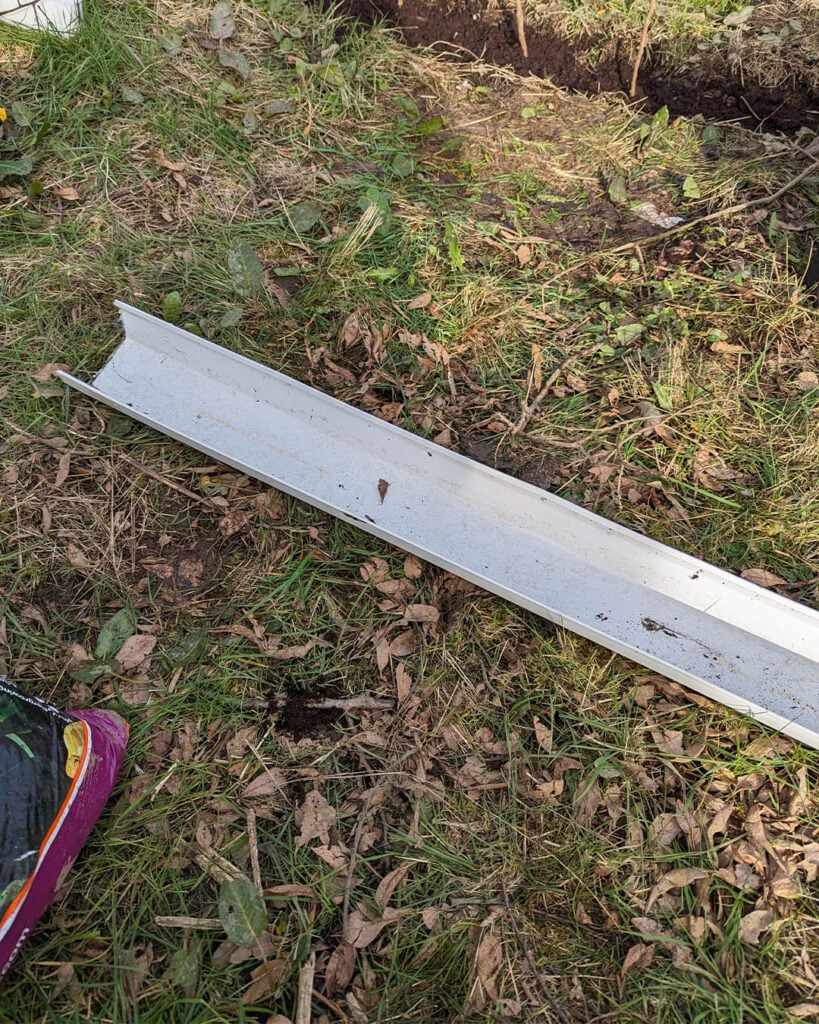
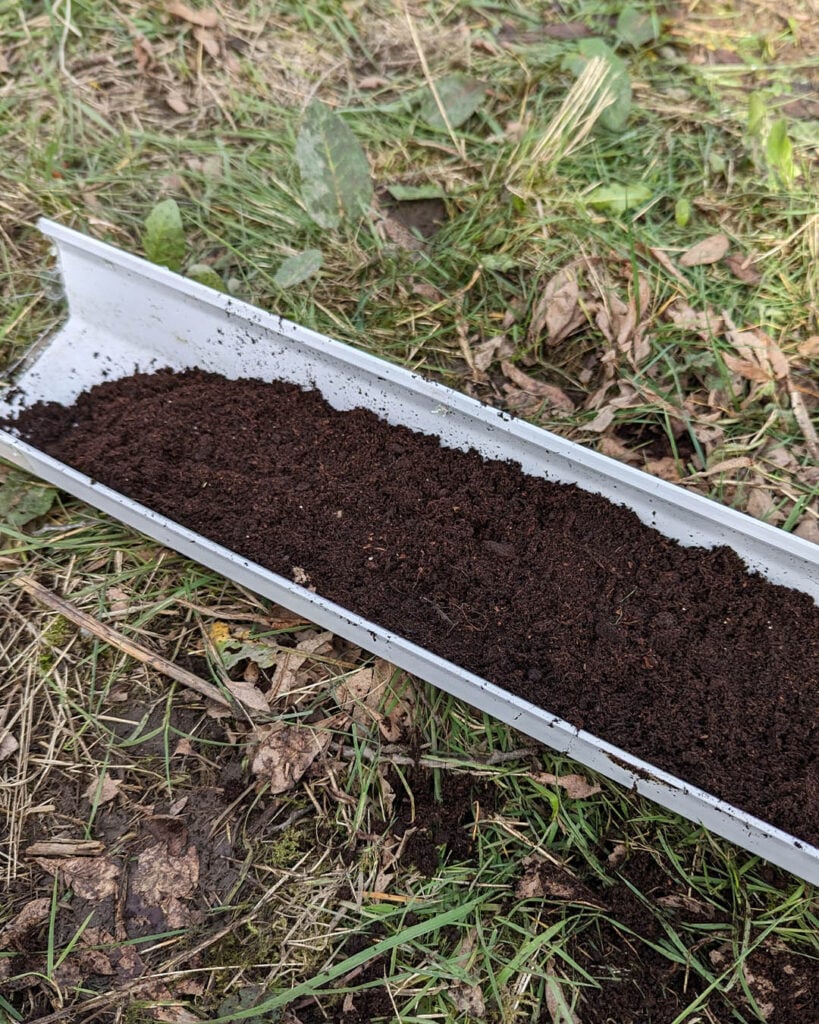
Im going to be sowing my sugar snap peas in this bit of guttering.
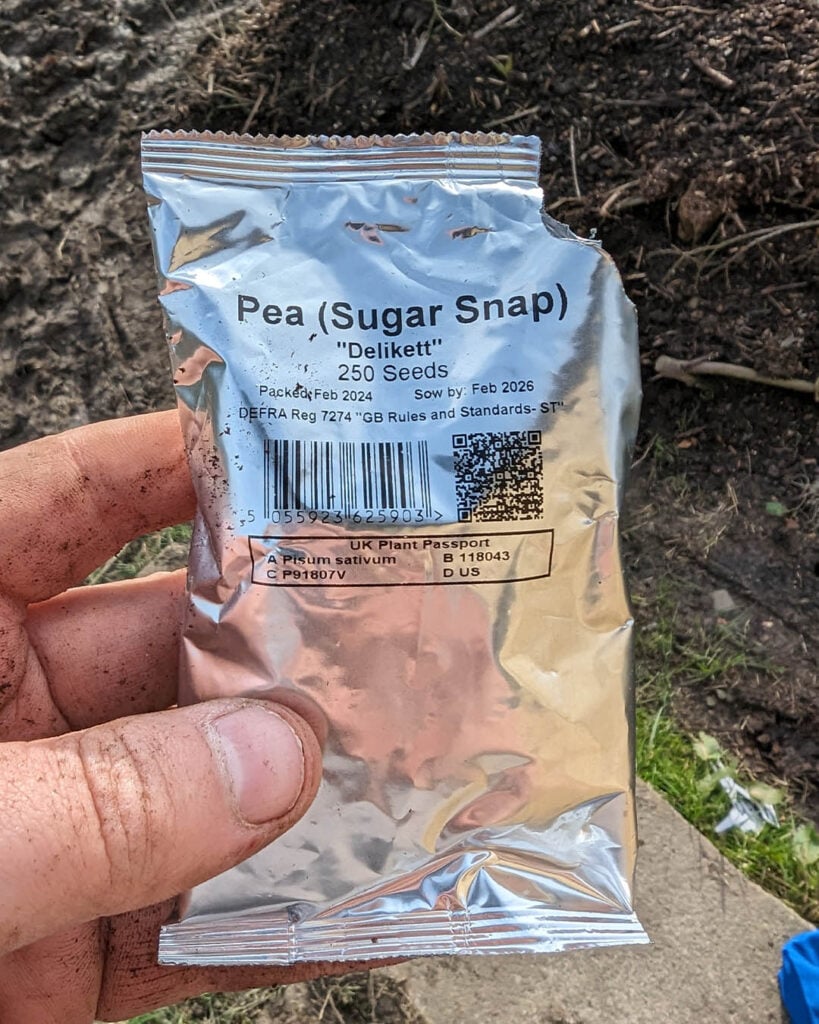
I like to sow my peas in diagonal rows to really squeeze them in. Peas don't mind being close together and actually cling to each other for support when growing vertically.
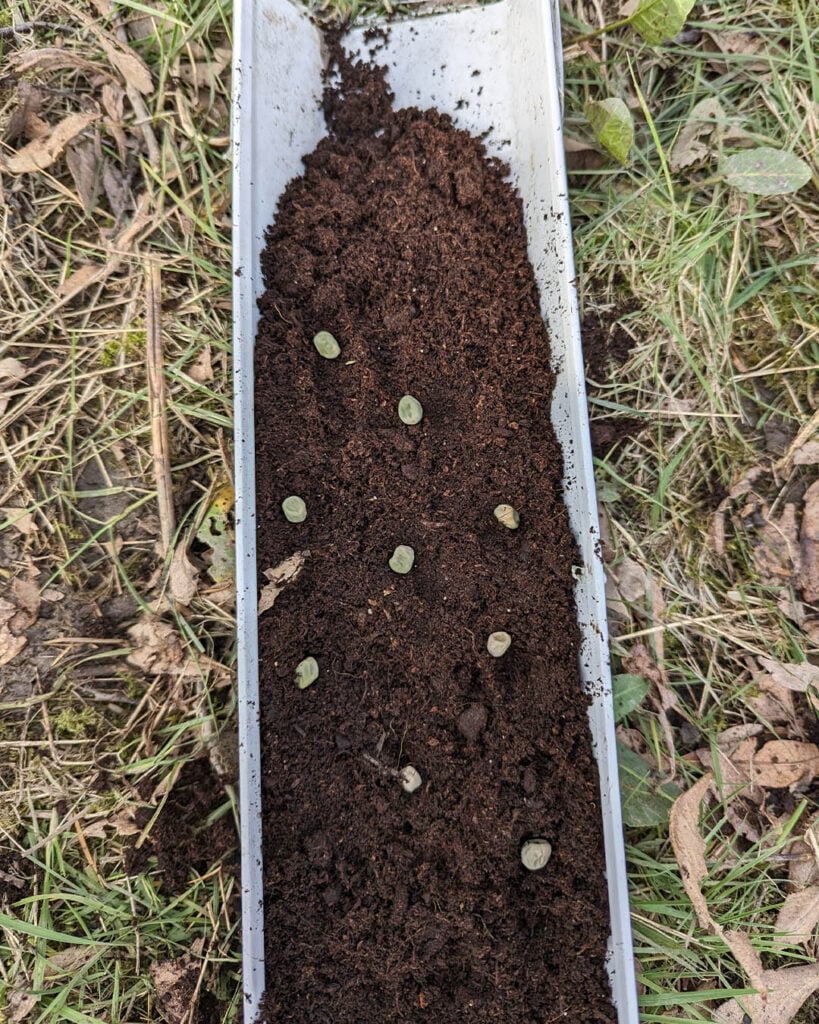
Firm the seeds into the compost and cover.
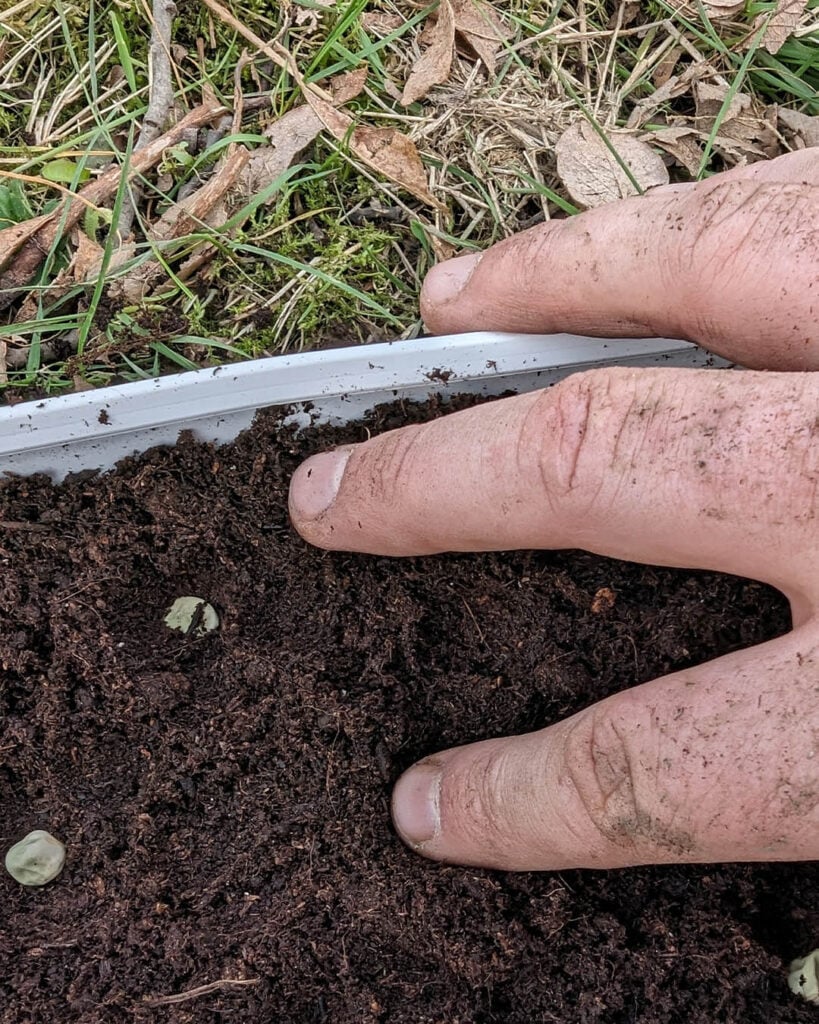
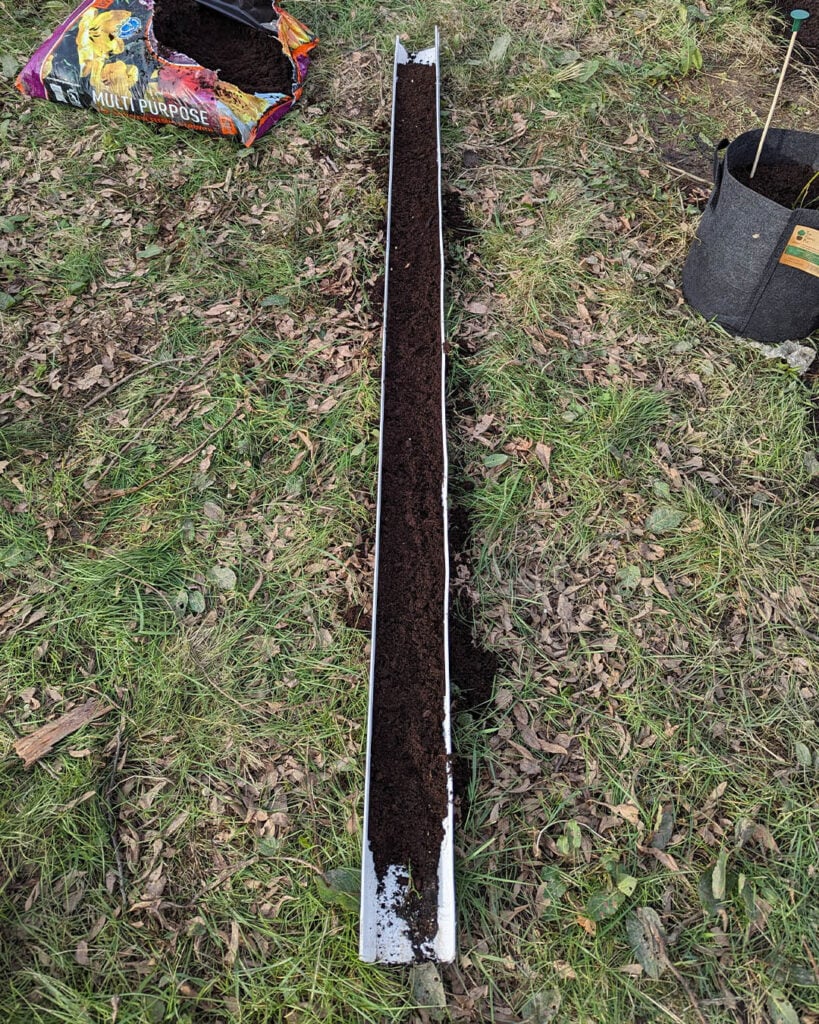
If you want a demonstration of getting the peas out of the guttering then Huw has a great video below!
Sowing Outside
When the soil is warm enough to work you can start thinking about sowing your peas directly in the soil.
You can sow peas in drills roughly 2" deep.

You can grow peas close together in a row, space them 1-2" apart.
The more important thing is to make sure you leave plenty of space between the rows.

Supporting Growing Peas
Wigwam
A staple of British cottage gardens and allotments, peas look so right growing up a homemade wigwam.
In my photo below the wigwam is made from hazel but this could just as easily be made from bamboo canes, although I think we can all agree that the hazel does look better!
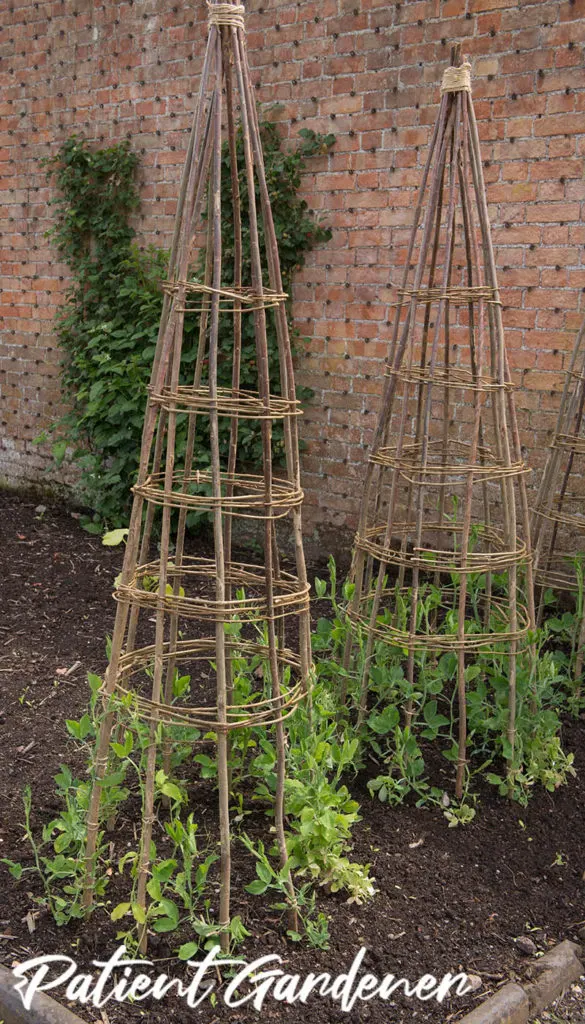
Bamboo Canes
An allotment favourite, a row of bamboo canes. Ideal for holding up peas and makes a lot of sense if you have your allotment or veg patch already set up in rows.
This is how I grow my peas and it always works well. You will need to tie your peas in at first but after a while, they tend to become self-supporting.

Stick Frames

If you wanna a natural rustic look and also want to reuse natural materials then give sticks/branches a go.
You could create an archway like the image above, or maybe more of a wigwam.
Use string to fasten it all together and you can end up with completely natural supports.

Netting

Peas will love to climb up any netting. They can grow up chicken wire, square metal or even plastic netting.
All the holes give the plants plenty of areas to get their suckers into and attach themselves to.
Something like this is a good idea if your peas grow in a particularly windy spot as it gives them plenty to hook onto.
The finer the netting the more areas the peas have to attach themselves.
String
You can build a solid frame above the peas and suspend some string or twine from it.
The peas will start to attach themselves to the twin and grow up it. Something as simple as this provides more than enough support for growing peas.

Above we can see some peas growing up string suspended from a simple bamboo cane frame.
This works well for a few peas but if you are planning on growing a lot of pea plants close together, then you will probably want to use something more substantial for your frame.
Trellis

Peas and trellises really go together.
Peas just love to climb up a good trellis, so if you have a wall or fence that could be well suited to a trellis then give this method a try.
Materials to use
So let’s get together a list of all the materials you can use to build a support structure for your peas.
- Bamboo Canes
- Hazel / Other Sticks
- String / Twine
- Netting
- Wire
- Trellis Fencing
Tieing Peas in
So as I alluded to earlier you will probably need to tie your peas into whatever support you decide to use, at least at first.
I like to use a little bit of string or twin but the metal gardening ties you can get are really easy to use as you just have to give them a few twists.
One thing you really need to look out for here is not putting the ties on too tight. Peas are delicate, especially when they are young. If you put your ties on too tight you can snap the stem and either kill or seriously harm your young plant, setting growth back by weeks.
Ongoing Care
Peas like to be well watered, so make sure you water them thoroughly throughout dry spells.
Apart from watering, they don't really require much ongoing care.
Pigeons and other birds can sometimes be a problem, if they are then you can net your plants to keep the birds off them.


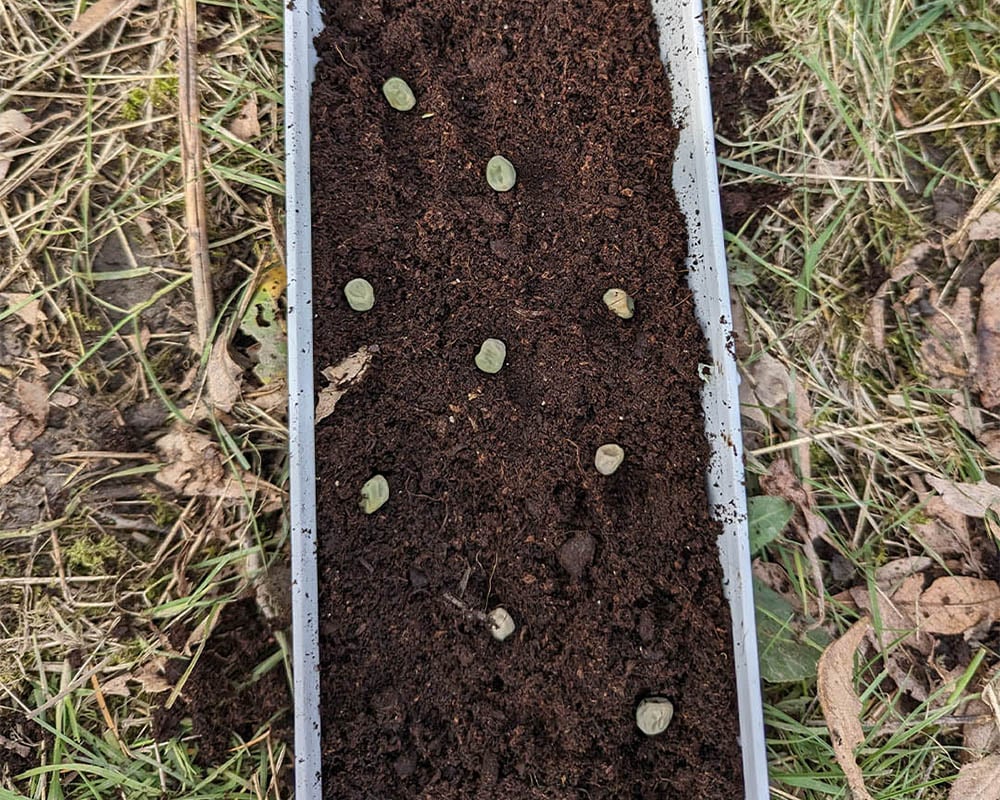
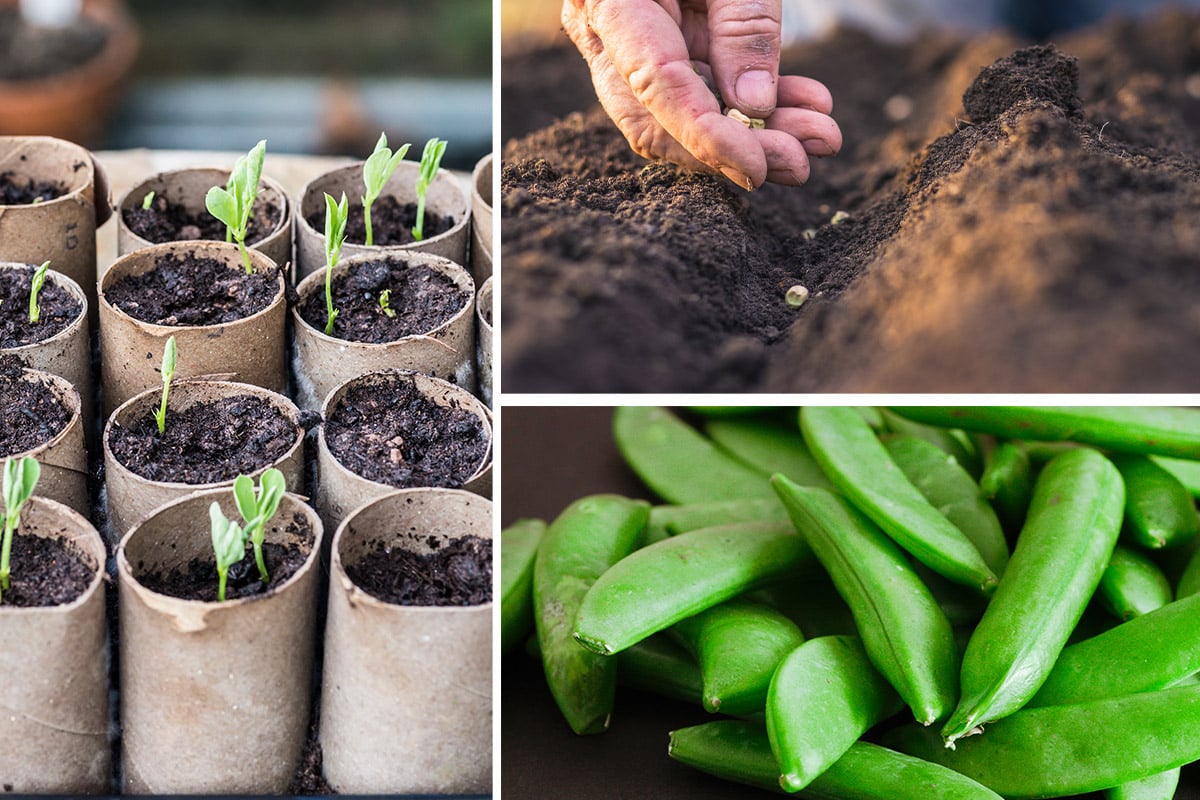
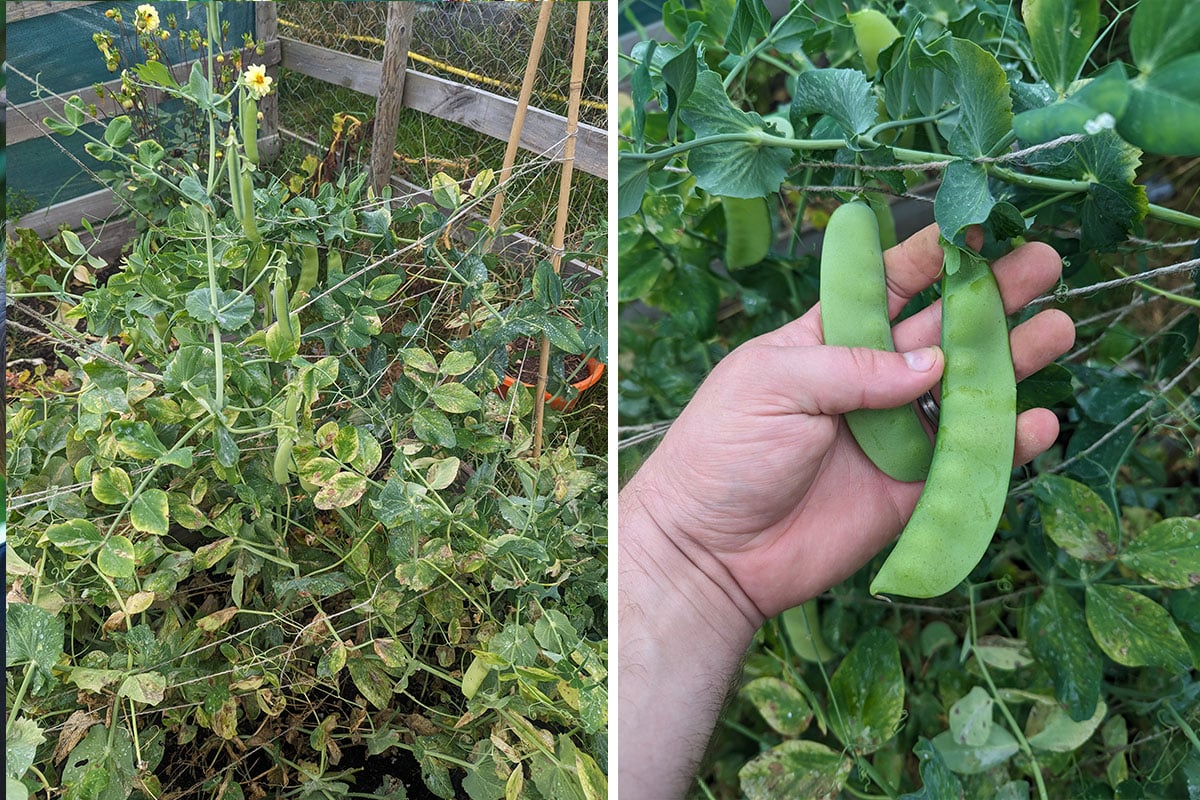

jane frost says
I'm really enjoying all the information you publish. I have almost a forest garden with various trees and shrubs growing here and next door. Finding out that I can grow some veg in shaded areas of which we have a lot has been very interesting. I've had some success with chard and spinach, potatoes and beans which I grown in large deep growbags because of the amount of tree roots we have criss-crossing out garden. I'm also going to have a go at straw bale gardening this season too if you have any tips?
Daniel says
Sounds great, never tried straw bale gardening so no tips from experience. I have heard it is very good though!